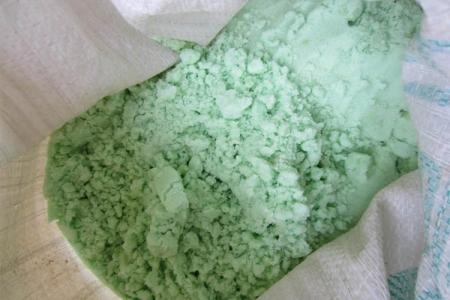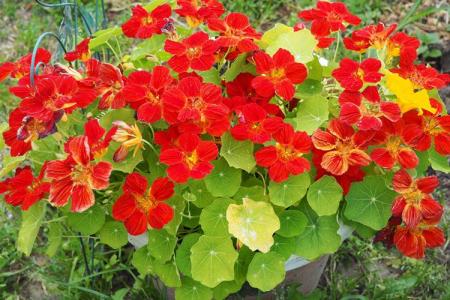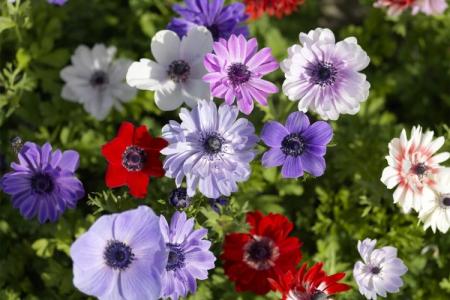
A green hedge is very beautiful and impressive. It can be used for zoning a space, fencing a site, or even building fancy labyrinths. The main thing is to choose the right one from which to plant it. Let's talk about the best plants for a hedge - with photos and names!
1. White-flowered spirea
The classic option for low flowering hedges. Spirea has decorative leaves, but when it is densely covered with white flowers, it can be difficult to see them. She is not afraid of damp and dense soil, but prefers sunny areas.

2. Juniper
Chinese, Virginia and horizontal varieties are suitable for tall hedges. Juniper is very unpretentious, feels great in our latitudes and is often used to fence the site.

3. Bubble plant Kalinolistny
The complex name hides a tall ornamental shrub, which, in fact, is known to all gardeners. Red varieties need sun, but yellow varieties feel good in partial shade. An excellent choice for large and spacious areas, because the vesicle grows up to 4 m.

4. Lilac
One of the most obvious, but at the same time the most beloved options. Lilac is good because it is completely unpretentious to external conditions, quality of soil and air, temperature extremes and short droughts. This is obvious considering that it grows well in the city. But it has a short flowering period and needs to be pruned every year.

5. Girlish grapes
A dense perennial liana is valued for its beautiful openwork foliage, which in autumn shimmers with all shades of burgundy. The scourge can stretch up to 7 m, so that a hedge from such grapes can be formed as you like, you only need a support.

6. Derain white
A beautiful shrub with dense foliage, it is unpretentious, resistant to frost, shade and moisture, and grows rapidly. It only needs regular watering, pruning after 3 years, and periodic feeding. The dogwood blooms twice during the summer.

7. Spruce
Several types of spruce are used for dense hedges. These are dwarf Canadian varieties, gray and Serbian spruce, or even ordinary varieties of different heights.

8. Euonymus
Ornamental deciduous shrub strikes with a variety of shades - from white to purple. Euonymus is a deciduous shrub, but it looks good in winter too.

9. Cotoneaster
There are many varieties of cotoneaster, and among them there are even evergreens. Bushes are dense and dense, from thin branches with small leaves, but they need to be shaped. The cotoneaster is unpretentious to the soil, bears fruit generously in the fall and grows up to 2 m, but does not tolerate stagnant water.

10. Irga
Another berry bush that is actively used for hedges. Irga is immune to adverse conditions and tolerates shade and drought equally well. She only needs drainage, rare pruning and feeding.

11. Western thuja
Thuja is quite sensitive to our weather conditions, but this particular variety will survive the most severe winter. There are dwarf varieties for small hedges up to 60 cm tall.

12. Common hawthorn
It is a compact hedge shrub in small areas. It is very dense, actively blooming from May, fragrant and graceful. There are thorns on the branches. Hawthorn requires proper planting and regular trimming.

13. Shrub cinquefoil
This beautiful ornamental shrub is prized for its long summer flowering. He is not afraid of winter frosts, he feels good in the city, and the variety of varieties allows you to choose almost any color. Cinquefoil is so unpretentious that additional watering is needed only in drought, and pruning - once every 4-5 years.

14. Berry yew
An evergreen coniferous plant is not afraid of drought and perfectly tolerates a haircut.It is good, but it grows slowly, so the hedge does not have to be thinned out every year. The downside of yew is that it is poisonous, so keep this in mind when you have children and pets.

15. Purple barberry
A very beautiful and unpretentious plant with purple leaves and yellow flowers instantly attracts attention. This is a rare case in a hedge where regular pruning is not necessary. Keep in mind that barberry does not tolerate excess and stagnant moisture.

16. Chubushnik
A pretty fragrant shrub densely covered with beautiful flowers. It easily recovers after damage and pruning, quickly takes root and feels ideal in the climate of the middle zone. Only wet areas are not suitable for planting.

17. Lawson's cypress
A very beautiful coniferous plant forms a neat and dense crown practically without human intervention. Cypress is unpretentious to the composition of the soil, resistant to pests and diseases, but needs regular watering, spraying and good lighting.

18. Forsythia oval
Beautiful yellow flowers and the same beautiful green leaves - and now the luxurious hedge is ready. Forsythia loves the sun, but takes root in the shade. It is important to protect it from strong gusts of wind and to ensure good drainage.

19. Hydrangea
There are so many varieties of hydrangea that you can equip dozens of hedges and not repeat it. It has large beautiful leaves and lush, profuse flowering. Moreover, both tree and paniculate varieties are suitable. But hydrangea is quite demanding on pruning, soil and watering, and needs shelter for the winter.

20. Shrub willow
Compact willow varieties with beautiful falling branches are ideal for green hedges in wet areas. Clay soil needs to be slightly loosened and lightened. The willow takes root well, but it needs abundant watering.




